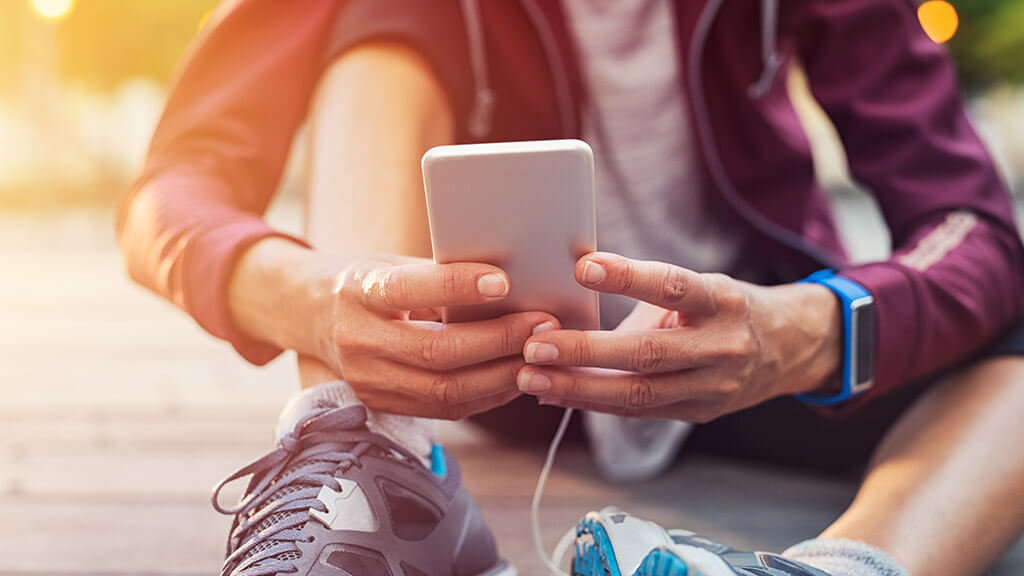Home > Blog > Health > Devices connected to the health service: do you need to equip yourself?
Devices connected to the health service: do you need to equip yourself?
Does this sound familiar to you …doing a session on a running machine, remembering to take your medication, ensure you sleep well, or making sure children brush their teeth properly? All these activities are now supported by connected by “smart electronic” devices. Technological, playful and practical, connected health-monitoring devices are booming. We buy them, sometimes just to see if can work for you, or other times out of real necessity. In any case, how can you choose the right device to ensure they have a benefit for you!

What are connected devices for and how do they work?
It is mainly in the area of well-being and health that connected devices reveal their potential. They can be useful for a better lifestyle (follow weight, sleep, activity), but also help with the follow-up of chronic diseases (monitor blood pressure or measure blood sugar).
The most common connected device is the smartphone, a complex device with sensors, which assists you in dozens of tasks and through which spend a lot of information about you and your activity (movements, number of steps, and hours of screen use).
The smartwatch is also a classic, but there are many others: pillbox, scale, toothbrush, mattress, blood pressure monitor, glucometer, mirror… The list is almost endless!
What they have in common is to collect and transmit data (via Wi-Fi or Bluetooth). Software processes them and communicates results (for example, an analysis of the quality of your sleep) or induces an action (such as the connected pillbox that emits a signal if it has not been opened for a specified period of time).
The right questions to ask yourself before investing in a connected device
If investing in a connected health device tempts you, the first question to ask yourself is how useful it is. Do you need it? Also what exactly does it do? Are you looking to monitor a particular disease or condition? Preventing the effects of age? Encourage yourself and have a better lifestyle?
Depending on your priorities, it’s almost certain that a device or app will meet your needs. Viewing user feedback will allow you to check whether in practice these solutions actually meet your needs. Also seek the advice of your Doctor, as they will certainly have the necessary hindsight to give you good advice.
Once this has been clarified and you buy your device, ensure you know how to use it, because if it’s too complicated it will never be used. Secondly, because access to data and the ability to interpret results well are essential. Misinterpretation can lead to stress. It’s best to talk to your GP or sports coach.
Finally, here is a third and final question not to be underestimated: what guarantees do you have in terms of security? Regarding the security of the device itself, of course (this is the role of the acronym EC), but also in terms of data protection. As a medical or paramedic device, your data should not be used to identify you in the event of a data leak.
What data is collected by the device? Are they protected? How are they treated? Are collection, storage and processing in line with the European Data Protection Regulation (GDPR)? Also check on the web that the object does not have any proven security flaws. In addition to the possible takeover of the device, these vulnerabilities are also a possible breach in your digital environment and potential access to sensitive information: your bank accounts, photos of children…
Be a manager of your safety
Even if the connected object you choose has the best security guarantees, it remains a potential threat. You always have a role to play in avoiding trouble:
- Start by changing the default password. Choose it smartly and so that it doesn’t be used on another connected device, on web accounts or in access to your Wi-Fi.
- Use a fictitious name instead of your identity whenever possible.
- Quickly make the security updates available for your connected devices, but also for all smartphones, tablets and computers connected to them.
- To prevent a hacker from accessing other devices, limit the associations between your connected devices to the bare minimum. Your connected thermometer doesn’t need to be associated with your printer.
- Turn off your connected device whenever you don’t use it.
Stay protected
The might be useful, compliant and secure, but connected objects are also fragile. They are not immune to theft or accident. Consider insuring them with the “home based electronic devices” or “portable electronic device” insurance options which are within our mozaïk home Insurance package.


